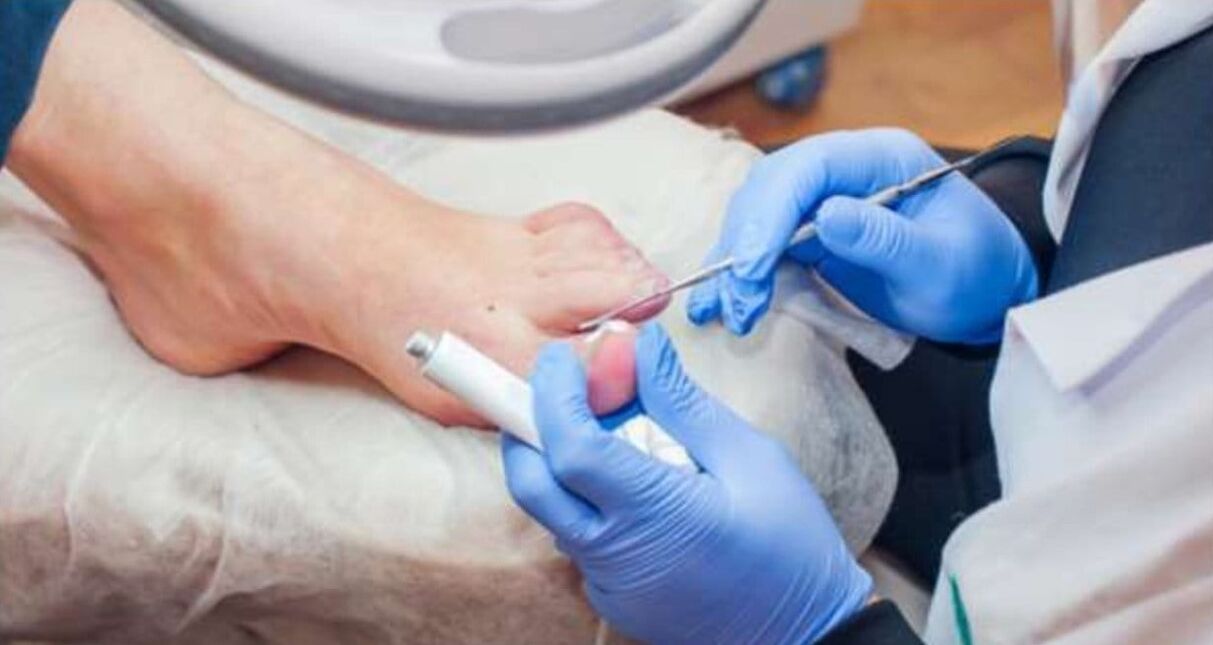Fungal diseases of the nails and feet are widespread.

OK
Doctors divide fungal diseases of the feet and nails into two groups. The first contains diseases called epidermophytosis caused by the fungus Trichophyton interdigitale, and the second - rubrophytosis, which occurs when the fungus Trichophyton rubrum grows. These fungi can affect both the nail plates and the interdigital folds, soles, and back of the foot.
Factors contributing to fungal infection:
- cracks, abrasions in the interdigital folds, caused by sweating or dry skin, wear, poor water drying, narrow interdigital spaces, flat feet, wearing tight shoes, etc. ;
- vascular diseases, limb freezing, standing work, varicose veins, decreased immunity, endocrine diseases, stress;
- professional factors - work in mining companies, metallurgy and chemicals. The fungus of nails and feet often affects soldiers and athletes, which is also due to the peculiarities of their profession.
The disease can be spread through close contact with the patient or through objects used by the patient. In terms of pollution, baths, swimming pools and other high-humidity public places are "dangerous. " There, they have created ideal "greenhouse" conditions for the fungus: heat and moisture, and the nail plate, which consists almost entirely of keratin, is an excellent medium for fungi.
Once in the nail plate, the fungus grows and multiplies very slowly. It gradually dissolves the nail, taking its place and spreading to the skin around it.
What's happening?
With a fungal infection of the skin of the foot, the process often begins with interdigital folds. Cracks and peeling develop in these places. Later, the skin starts to turn red and itching occurs. The process often leads to the back of the foot, the soles of the feet, the soles of the toes. Other clinical forms of fungal infection are possible.
The fungus manifests itself as follows:
- Nail color: white, yellow, brown, black. The nail is dull, opaque.
- Nail surface: uneven, rough. The nail is crumbling.
- Nail thickness: thickening or thinning / layering.
- Nail shape: deformed.
- Nail drive: unchanged or inflamed.
Significant deformation and thickening of the nails causes some difficulty during cutting. In addition, the pressure of a thick, shaped nail on the base fabric (nail bed) as well as the pressure of the shoe on the nail can cause pain in many cases.
Diagnosis and treatment
The diagnosis and treatment of fungal diseases is performed by a dermatologist. The doctor first sends you to a scraper - to determine the type of fungus and prescribe the treatment needed. Moreover, certain medications are prescribed based on the general condition of the patient, the presence or absence of other diseases. Therefore, self-healing is ineffective and can sometimes even worsen the course of the disease.
The main danger of a fungal infection of the foot is that the disease progresses continuously. If the fungus is not treated, it spreads from one nail to others and then to areas near the skin or nails. In rare cases, even the internal organs are damaged.
In addition, the pathogens of the disease, as they are very potent allergens, can restore the sensitivity of the body and thus cause various allergic reactions.
Many patients prefer to use the widely advertised antifungal varnishes and ointments. It should be remembered that antifungal varnishes only help in the first stage of the disease and do not affect the total thickness of the nail - in many cases they have to take medicines (tablets) inside. Also, some creams only work on the skin without penetrating the nail. These funds are primarily intended for prevention.
Sometimes people don’t go to doctors because they are afraid of having their nail plate removed completely. This will not happen because the delete method is no longer valid. Currently, powerful antifungal agents are used, which, when used correctly, will completely eliminate the fungus.
During and after the treatment of a fungal infection, it is important to disinfect everything that the fungus has come in contact with. Disinfect the floor, walls, baths, showers, bathrooms, and the patient's personal items: bedding, shoes, skin and nail care items.
You can reduce the risk of fungal infection by following these recommendations:
- use a custom towel;
- wear custom indoor shoes;
- take a shower after the pool;
- do not wear slippers when visiting;
- do not try barefoot shoes in the store.
























